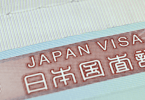Life BC (Before Covid 19)
prije Covid 19. dining out was a no-brainer; grabbing a pizza or making a reservation at the newest, trending restaurant – no problem. However, thanks to the President of the USA and other elected officials, having a drink at a bar with friends, or eating a burger at a nearby pub has taken on the decision-making skills and potential consequences of sky-diving or trampoline jumping…potentially risking limb and life. Determining if dining spots are open or closed, permit indoor/outdoor seating or take-out only, have non-touch menus, accept PayPal or ApplePay and have upgraded their HVAC system saps the energy cells. What was everyday now takes more thought than it may be worth.
While consumers try to decide whether they should eat in or dine out, the complexity of being a restaurant owner can only be imagined and the vagaries of new rules and regulations that have been designed by government administrators and elected officials with limited or no experience or knowledge of the restaurant business is a nightmare.
Covid 19 Arrives and Restaurants Get Sick
As the scientists started to quantify the outbreak of Covid 19 in Wuhan, China (or think it started in China), and the information leaked through the media to consumers, it slowly dawned on world leaders that this was not just another virus; this one was bigger and bolder then anything the world had seen in decades and was ultimately defined as a pandemic.
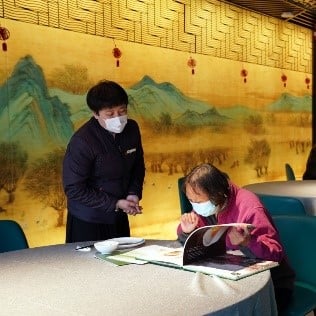
The xenophobic response to the outbreak? Americans stopped dining at Chinese restaurants, causing an avalanche of closures of Asian dining spots throughout the country. The good news is that Chinese restaurants have regained some traction as dining-out/take-out food options are limited, leaving Chinese grab-and-go viable and affordable.
Some locals and visitors have taken to releasing their pent-up desire for out-of-home dining by packing bars and taking their unmasked conversations to neighborhood streets. As the crowds and noise increases, residents encourage government agencies to close the offending bars and restaurants, leaving small business in a seemingly endless game of see-saw…one day they are allowed to open, the next day they are fined and/or forced to close. Few industries can withstand this uncertainty and survive. The restaurant industry, largely shaped by small businesses, is unprepared and because they operate on small margins, Covid 19 is likely to cause their demise.
Consumers are Fickle

Over the last few years, new restaurant openings have frequently outpaced consumer demand and, with increased overhead, profitability has been in free–fall. In 2019 Pizza Hut and Wendy’s franchisee NPC International saw potential bankruptcy on its radar screen. The Burger King operator (Carrols Restaurant Group) cut capital spending to conserve cash and pay off debt. The Nezavisna restoranska koalicija predicted that as many as 85% of independent restaurants could permanently close by the end of the year.
Government Intervention. Benefits to Whom?
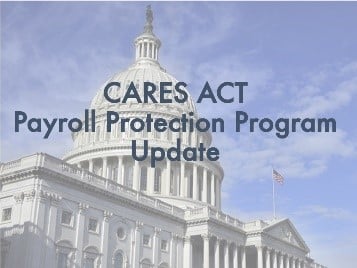
The $2 trillion aid package passed in March by the US government included financial programs aimed at keeping the economy from collapse amid the Covid 19 pandemic and anticipated fallout. The restaurant industry, one of the business sectors hardest hit by the economic crises, was offered a new relief channel separate from the SBA loan program.
The Payroll Protection Program (PPP) funds were made available to businesses affected by the pandemic and could be applied to meeting payroll, as well as lease and utility payments not covered through other government loans. Interest rates were capped at 4 percent and borrowers’ fees were waived. In addition, small business borrowers could have portions of the loans forgiven when they were used for employee compensation and certain other business maintenance costs. Specifically, the forgiven amount would match what the borrower spent on payroll, mortgage and rent obligations, and utility costs. The forgiveness amount was going to be prorated based on how the payroll changed from one year ago. Employees rehired after being furloughed would be regarded as workers who never left the payroll and the waived amounts would not be counted as income in computing the borrower’s taxes.
Because indoor table service has been discontinued in most states, servers were no longer able to earn tips. The plan allows full-service businesses to base their payroll and forgiveness computations on the wages the wait-staffers current wages, instead of earnings plus gratuities. Restaurant employees and other workers who qualify for unemployment insurance after being laid off could receive an additional payment of $600 per week for four months.
It is unfortunate that most of the Federal funds found their way into the bank accounts of large restaurant chains, leaving little for small and independent enterprises – who, at the end of the day, received only 5 percent of the available assistance although 60 percent of the small restaurants had applied for the funds.
A result of the method used to close restaurants (partial rather than full closure) meant that the closing failed to trigger business interruption insurance for many restaurants. Other insurance restrictions: excluded coverage in the case of epidemics, action by civil authority or required physical damages on the premises.
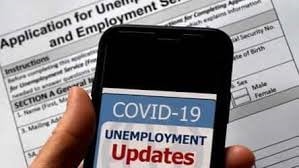
Mickensey.com estimates that of the 650,000+ US restaurant locations that were in business in 2019, approximately one in five – or more than 130,000 will be permanently shuttered. Independent restaurants will see the highest level of closings because they are more vulnerable (minimal off-premised image, limited digital capabilities, low emphasis on value-based menu selections), and an unfavorable business model (thin margins and limited access to capital). The independent share of locations could fall from 53 percent in 2019 to 43 percent in 2021.
Restaurant closures cause a ripple effect along the supply chain. Dependent industries including food production, wine and liquor distributors, shipping, linen suppliers, fishing, and farming suppliers – as well as musicians, florists and delivery services – will all feel the impact of restaurant closures.
As of April 2020, 20.5 million US jobs were eliminated and approximately 5.5 million were in the restaurant industry. The Bureau of Labor Statistics reported that payroll employment in food services and drinking establishments fell from approximately 11.9 million in March to 6.4 million in April. If the numbers from February (12.3 million), before the Covid 19 crises reached its peak and states issued stay at home orders, a total of 5.9 million people in the restaurant industry have become unemployed and this does not include people who were not on the payroll (i.e., undocumented workers) and all the people who have filed claims for unemployment benefits since the data collected in mid-April.
Customers Quarantined
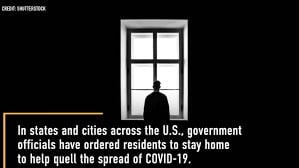
As recently as April 2020 patronage at bars and restaurants had declined by 89 percent nation- wide compared to the previous year (Cuebiq, a NY based mobility analytics company tracking consumer foot traffic). When bars reopened, some patrons returned and as of July 7, visits nationwide were back to 48 percent of the previous year. Visits to bars and New Jersey have declined by 72 percent although bars in Wyoming and North Dakota returned to pre-pandemic levels.

Bars. Sharing More Than Necessary
There appears to be a link between bars and viral transmission. Gerardo Chowell-Puente an epidemiology and biostatistics professor at Georgia State University found that bars are likely to pose a greater transmission risk than other indoor venues (i.e., retail stores and movie theatres) because of the close interaction among customers. Alcohol may also lead to the disregard for caution and safety protocols.
Beyond the concerns of virus spread in closed spaces is the greater risk in bars because people are in these venues without a mask (for drinking, eating and conversation) and talking/shouting spreads the virus. The average age of patients admitted to hospitals has decreased to under the age of 50 (40 percent). It appears that younger people are less susceptible to severe Covid 19; however, they are not totally immune and while they may be symptom-free, they still may be carriers of the virus and shedding/sharing it with others with whom they are in contact.
Open? Close? Reopen?
On July 16, 2002, Governor of New York, Mario Cuomo issued new regulations for bars and restaurants stating that they cannot serve alcohol to anyone who was not also ordering and eating food. He also declared that all service at bar tops must be for seated patrons who are located 6 feet apart or separated by physical barriers. As a result of the physical distancing, restaurants are operating at substantially less than 100 percent capacity and it takes longer to turn tables and the new protocols require staff be trained in everything from dish clearing to serving drinks safety.
Definitely New! Better? Maybe.

- Space allocation (smaller) and ventilation (larger) will definitely change restaurant design with a focus on limited or no seating.
- Filtration of the air entering spaces will be critical to the engineer’s basis of design; technologies such as ultraviolet-C light, bi-polar ionization, high-efficiency particulate air filtration and other new technologies will be studied for their immediate impact, implementation availability and applicability.
- Hygiene and sanitation are priorities. New technologies track rigorous sanitation practices in the front and back-of-the-house, and during the delivery process.
- Greater access to hygienic products (wipes, sanitizers) at tables and public areas.
- Cutlery, glassware and plates cleaned at tableside (or brought to the table packaged) for customer assurance. Coverings over meal plates removed tableside.
- Removal of salt and pepper shakers; substituted with packets or on demand.
- Servers placed behind the counters in restaurants offering buffet or salad bars.
- Cash pushed to the dumpster because money may carry the virus.
- Food and beverage orders placed via mobile technology. From menu browsing and ordering to instant payment, smartphones replace the entire ordering and payment process, avoiding passing credit cards to staffers.
- e-Receipts replace paper receipts.
- Robots used heavily in this labor intense industry; in the kitchen to disinfect areas; to deliver food to the tables and to customers at nearby locations.
- Robot baristas make cappuccinos – at the rate of 100 per hour. Customers order via their smart phones and receive a text when the drink is ready. The entire transaction is contactless and there are zero labor costs.
- Robots replace kitchen staff. The Kissaki restaurant offers sushi-producing robots. One machine produces rice sheets, another creates rice balls for nigiri, and a third cuts rolls. The amki machine produces 1100 rice sheets per hour.
- Back-office automation takes over the back-of-the-house for quick service restaurants (QSR) as well as casual and fine dining. Kitchen video screens improve efficiency and order accuracy.
- The result of Covid 19 and the idea that the disease is transferred from animals to humans through meat consumption, is creating a trend to plant-based meats as a healthier alternative. In addition, restaurants are keen to add more clean meat to their menus.
- Predictive ordering for food and liquor done through smart phones or other electronic devices.
- Decreased demand for exotic cuisine and more interest in supplies from domestic farmers, fisheries and artisanal chefs.
- Ghost kitchens and/or off-premise commissary kitchens become the norm for multi-unit operators.
- Customer experience redefined and efficiencies increase through mobile/kiosk order options, touchless/frictionless ordering/pick-up systems using URLs, QR codes or NFC tags.
- Customers motivated to return and increase their average guest check via loyalty programs easy to redeem from a mobile device. Businesses benefit for they obtain valuable insight into customer behavior enabling them to focus on what works to maximize ROI and secure return visits.
- Universities and tech companies develop apps to track the spread of infectious diseases that are useful to managers and employees.
Life Beyond Covid 19

Consumers to the Rescue
For the foreseeable future, restaurants will be operating at a 50 percent (or less) capacity. Every seat is valuable and patrons have an important role to play in keeping the restaurant industry viable.:
- If you are going to be late, or a no-show, text the maître d’ and let them know of the change.
- Limit the amount of time you and your guests occupy the table.
- Guest turnover is important to bottom-line profitability. If you have finished dinner and drinks, pay the tab (along with a generous tip) and leave the restaurant or move to the bar or other space.
- Before reserving prime dining time for the restaurant, consider starting earlier or later – especially if you are part of a large group.
- Wash your hands or use sanitizer as soon as you enter the dining space and try not to bring lots of stuff (leave the backpack at home). Clutter makes it even more challenging for the restaurant staff to keep the space clean and customers 6-feet apart.
- Be mindful of personal behavior. It may be tempting to leap up to hug a friend or stroll across the restaurant to greet someone; however, it is best to remain seated so the wait staff can move easily and quickly through the dining room.
- Be patient with wait staff. New systems are being designed and implemented and not every move will be as efficient and effective as it was “in the past.” Give the restaurant and employees a break and be kind and understanding as they face new challenges.

Dine Out At Your Own Risk
It is important to note that dining at a restaurant is not risk free. Eleanor J. Murray, ScD, an Assistant Professor of Epidemiology at Boston University School of Public Health in Massachusetts, suggests that restaurant patrons consider the amount of time spent surrounded by other people and their proximity to you; whether you are seated/standing in outdoor or indoor (ventilated/non-ventilated) space; how physically crowded the space is around you and if the people with whom you are surrounded are your usual contacts.
No matter what precautions the restaurant has orchestrated, their safety measures will not eliminate the risk. It is best to be seated outdoors where tables are spread at least 6 feet or more apart and masks are in-place before and after dining. Dr. Stephen Berger, an infectious disease expert and co-founder of the Infectious Diseases and Epidemiology Network recommends dining in, “large, open and ventilated” space – outdoors, when possible. He also recommends that before being seated – be assured that the staff is wearing masks and the masks cover their noses and mouths. Even Dr. Anthony Fauci, a veteran epidemiologist, is wary of restaurants, and, in a recent Market Watch interview said, “I am not going to restaurants right now.” For people who are dining out he recommends outdoor seating that has properly placed spacing between the tables.
The next few months will not be easy for restaurants or consumers.

© Dr. Elinor Garely. Ovaj članak o autorskim pravima, uključujući fotografije, ne smije se reproducirati bez pismene dozvole autora.
#rebuildingtravel














